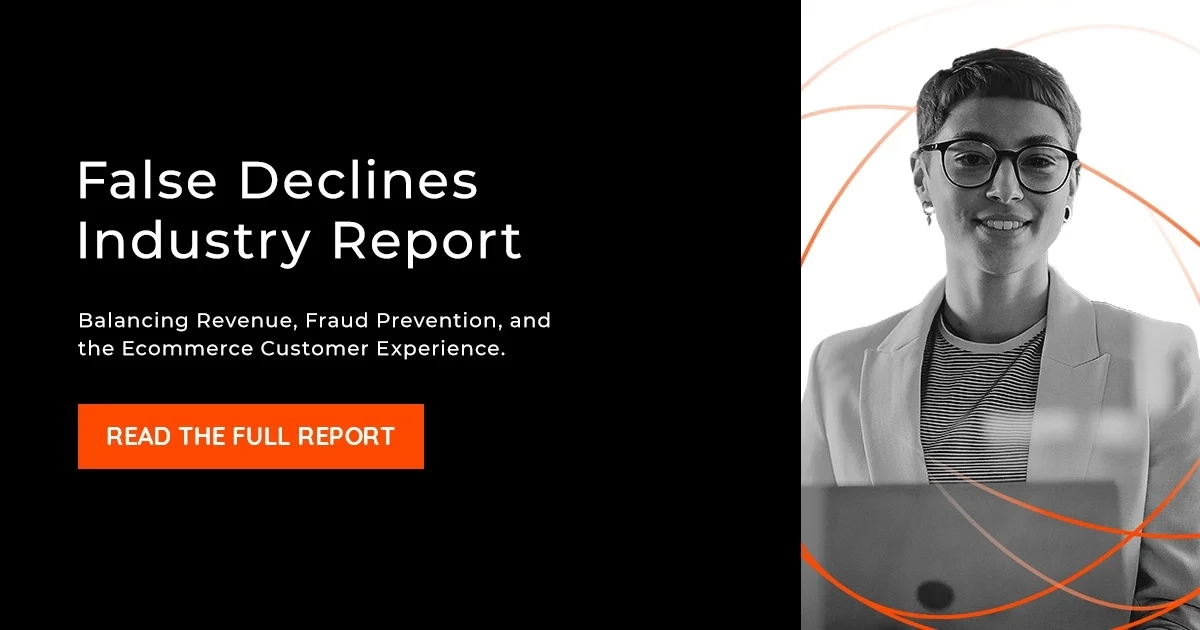
The Dangers of False Declines
False declines happen when a legitimate transaction is mistaken for fraud and denied. About 90% of declined transactions are actually valid customers just trying to give you their money.
Examples of false declines include:
- A grandmother buys gifts and has them shipped directly to her grandkids, but the AVS filter flags the orders as fraudulent.
- A couple is traveling out of the country, and while ordering something online to be delivered to their home, the fraud filter declines it based on their current location.
- A business has the good luck of a product going viral online, but the sudden influx of sales triggers the velocity filter, turning away scores of customers.
False declines are a massive concern, with losses due to false declines in the hundreds of billions. In addition, false declines can have a nasty ripple effect: If you recall, we stated earlier that your cost per $1 of fraud is just under $4.
Your cost per $1 in false declines is a whopping $13.
That's because when you falsely decline a customer, you're likely saying goodbye to that customer forever: In our 2021 Consumer Attitudes study, we learned consumers are not forgiving when it comes to being denied what they want to purchase.
When asked if they would return to the same company after being declined, 40% of respondents said they would not.
If you sell low-volume, high-dollar offerings, that spells trouble.
It gets worse: 34% of respondents reported that not only would they never shop with the company again, they would take to social media to share their displeasure.
When it comes to false declines, millennials are the least forgiving age group, with 56% saying they would never place another order with the business again and a whopping 64% saying they would complain on social media.
Given how much millennials dominate social media consumption, small businesses simply cannot afford to let their false declines get out of control.

Small businesses in Latin America should be very wary of false declines
If you have a small business or are considering starting a small ecommerce business in places like Argentina, Chile, Peru, Ecuador or any other Latin American country, false declines are most likely going to be your biggest obstacle. Solve that problem and you’ll be head and shoulders above your competitors when it comes to revenue and the all-important customer experience!

False Declines’ Ugly Stepsister: The Deny List
Some companies try to circumvent chargebacks and false declines by trying to identify “repeat offenders” or extreme fraudsters and place them on what’s called a fraud prevention deny list.
A deny list is essentially a database with credit card numbers, names, addresses, emails, phone numbers and IP addresses for the fraud filters to use to automatically decline transactions.
Here’s why these types of lists are a bad idea: If the customer’s credit card was stolen, the customer’s name could end up on a deny list, even though the customer is actually the victim. Another problem with lists is that IP addresses are constantly exchanged. A valid customer could end up on a list completely in error.
Like we said, many small ecommerce businesses feel stuck: Either they risk losses to fraudsters, spend all day verifying transactions, or risk turning away much-needed business because of a ham-handed deny list.
As it turns out, though, there are more fraud prevention options than most small businesses realize. The key is to find the one that works with your business … and your customers.




